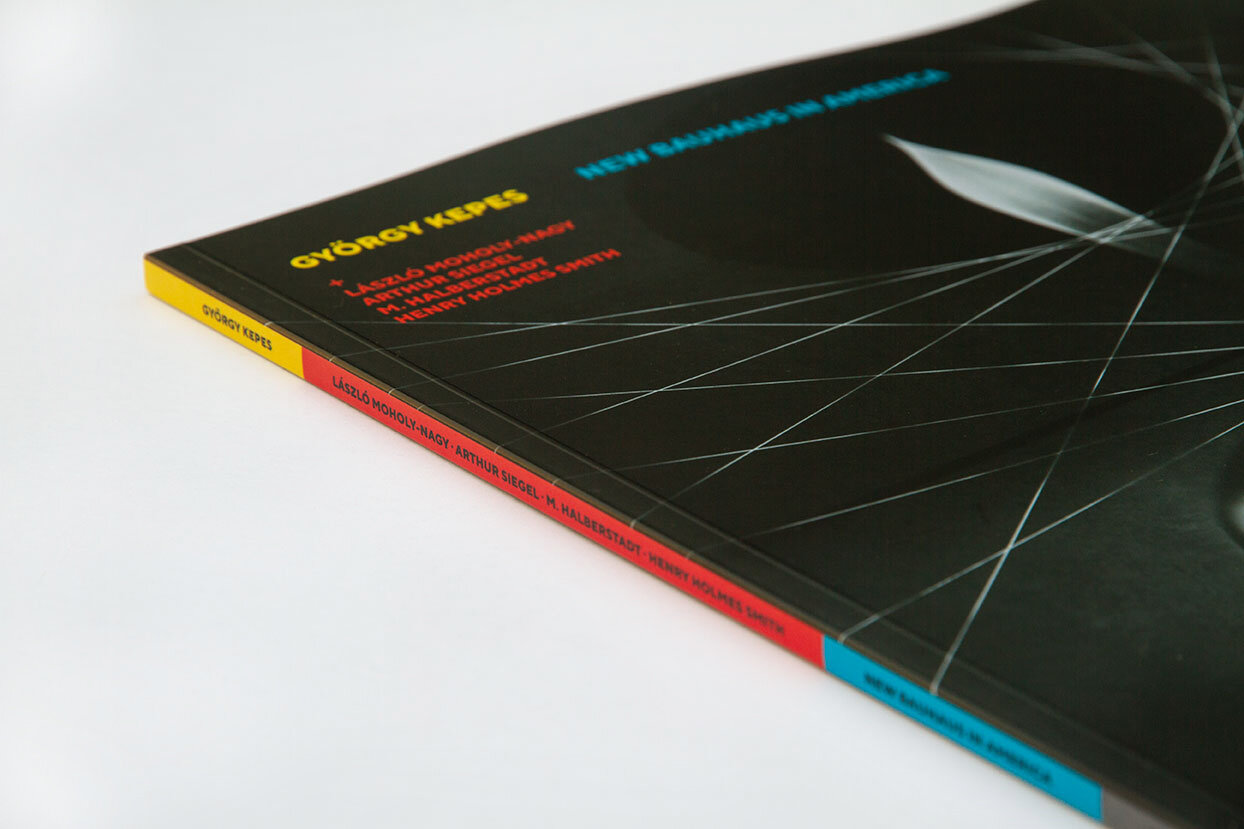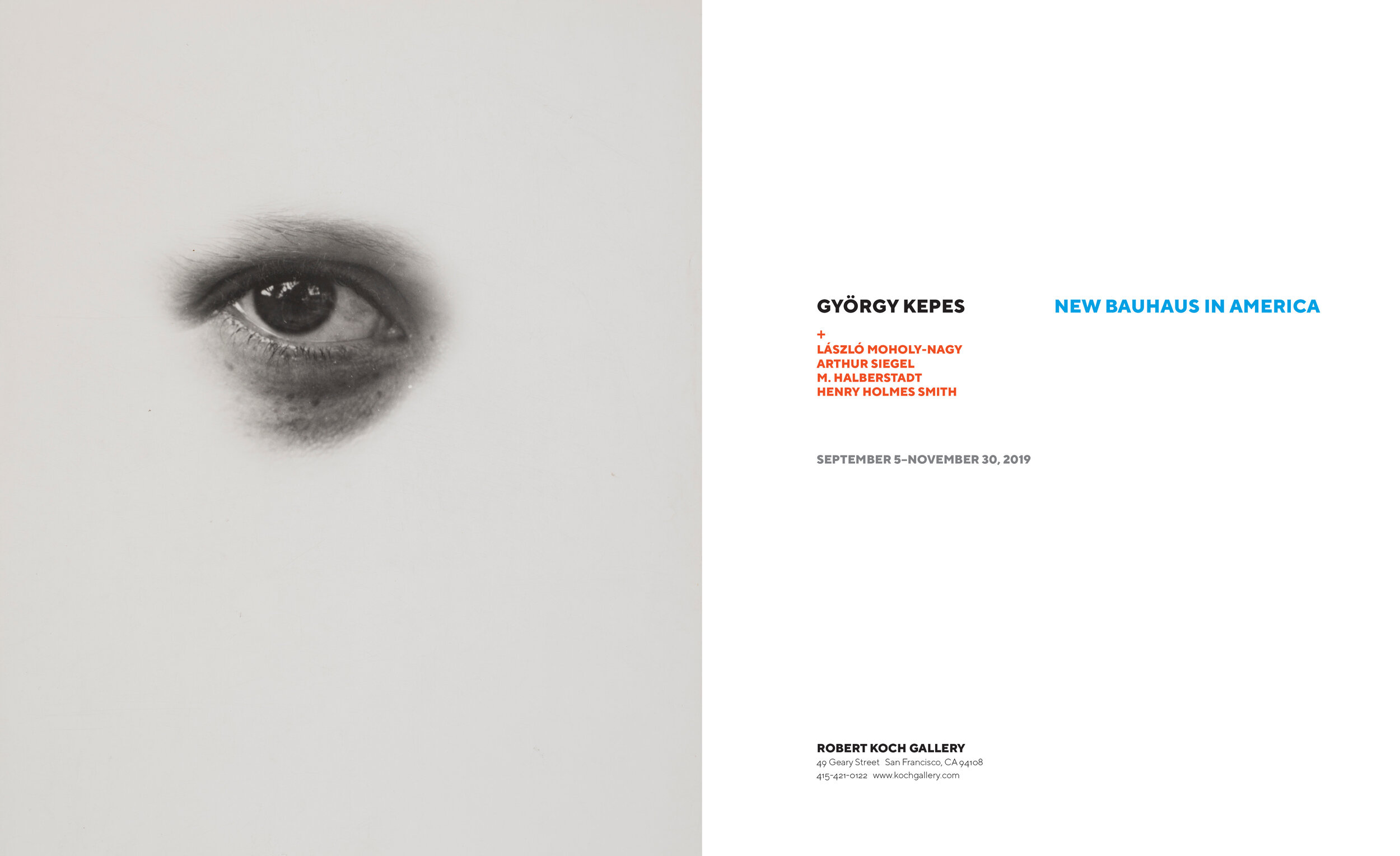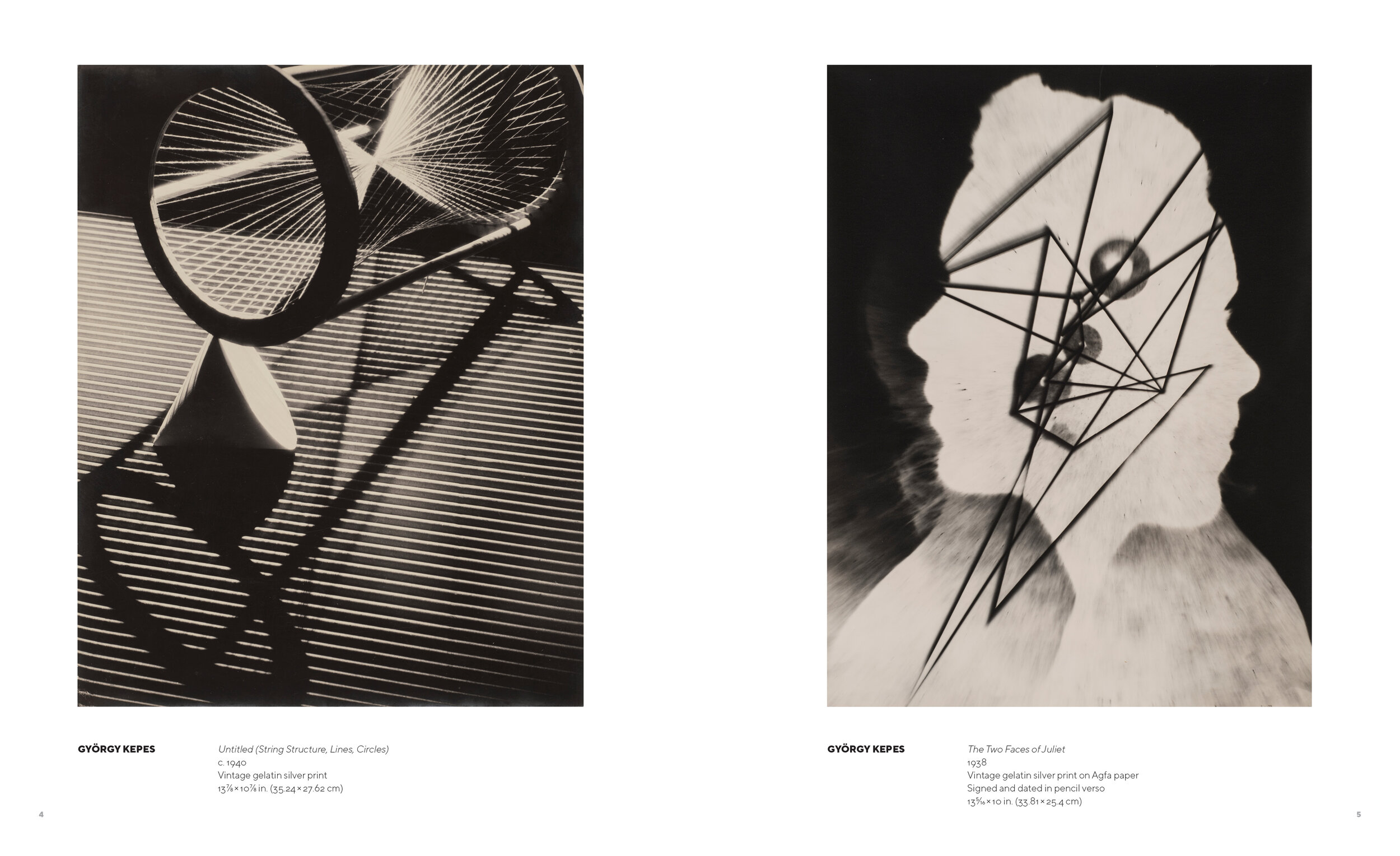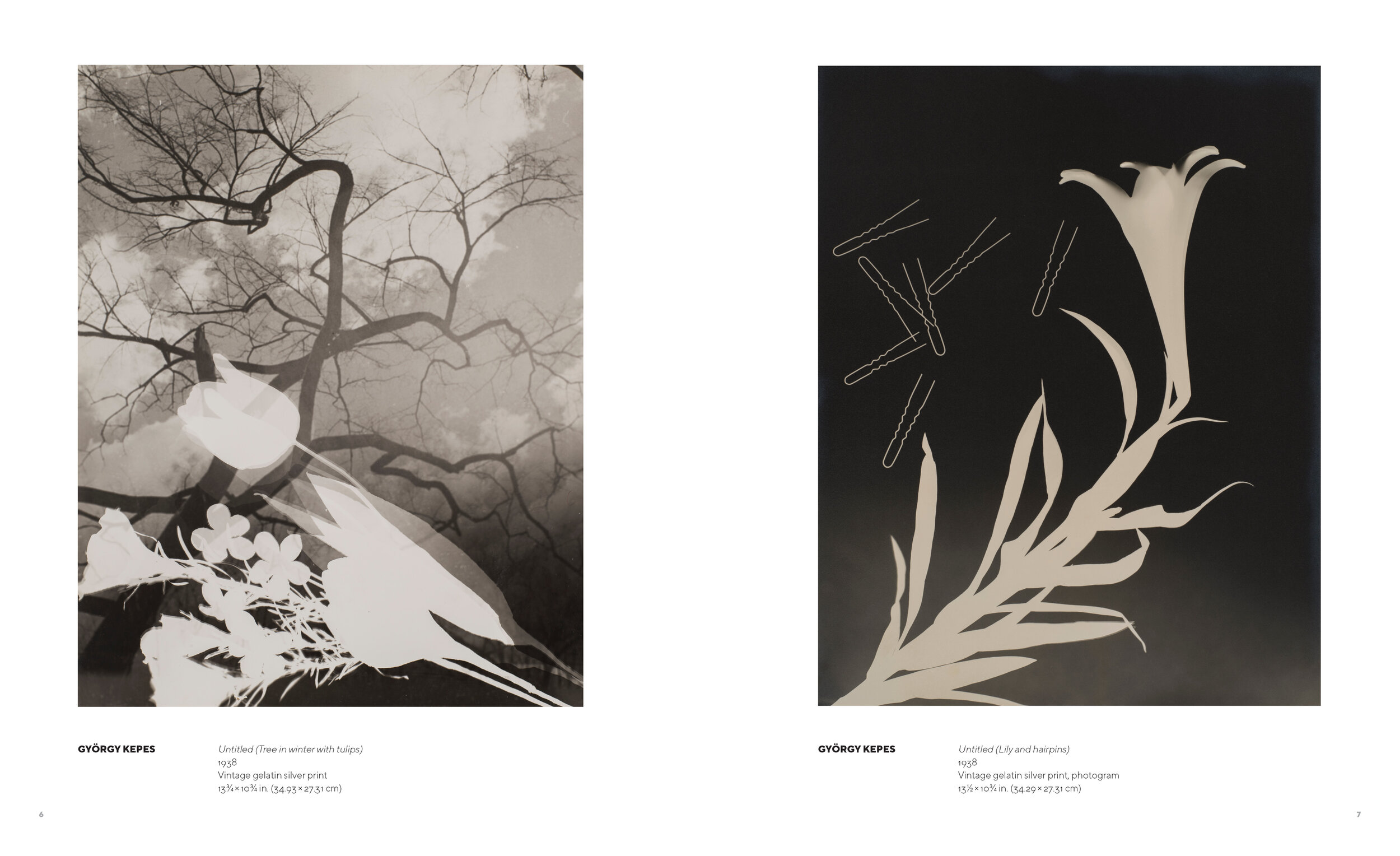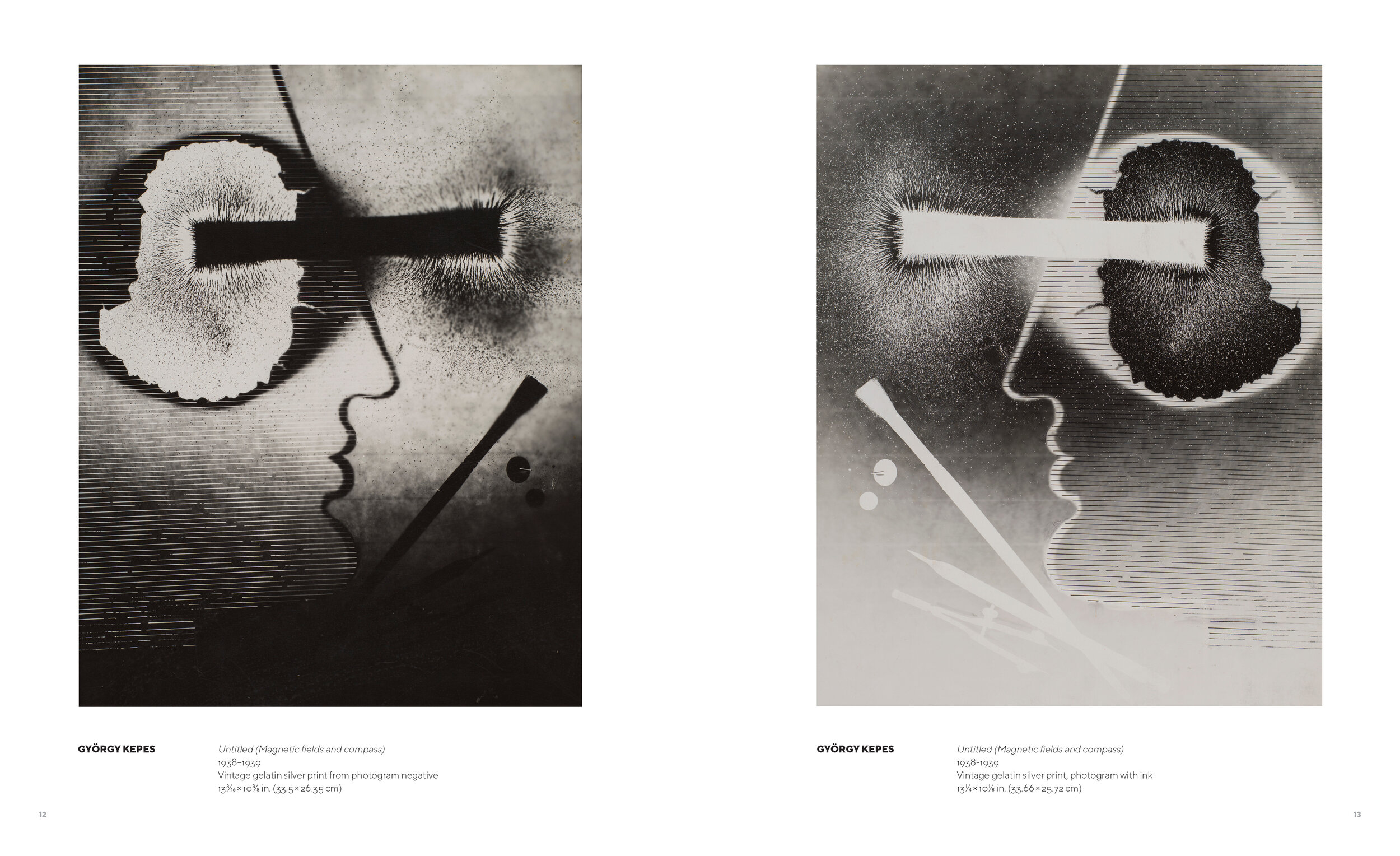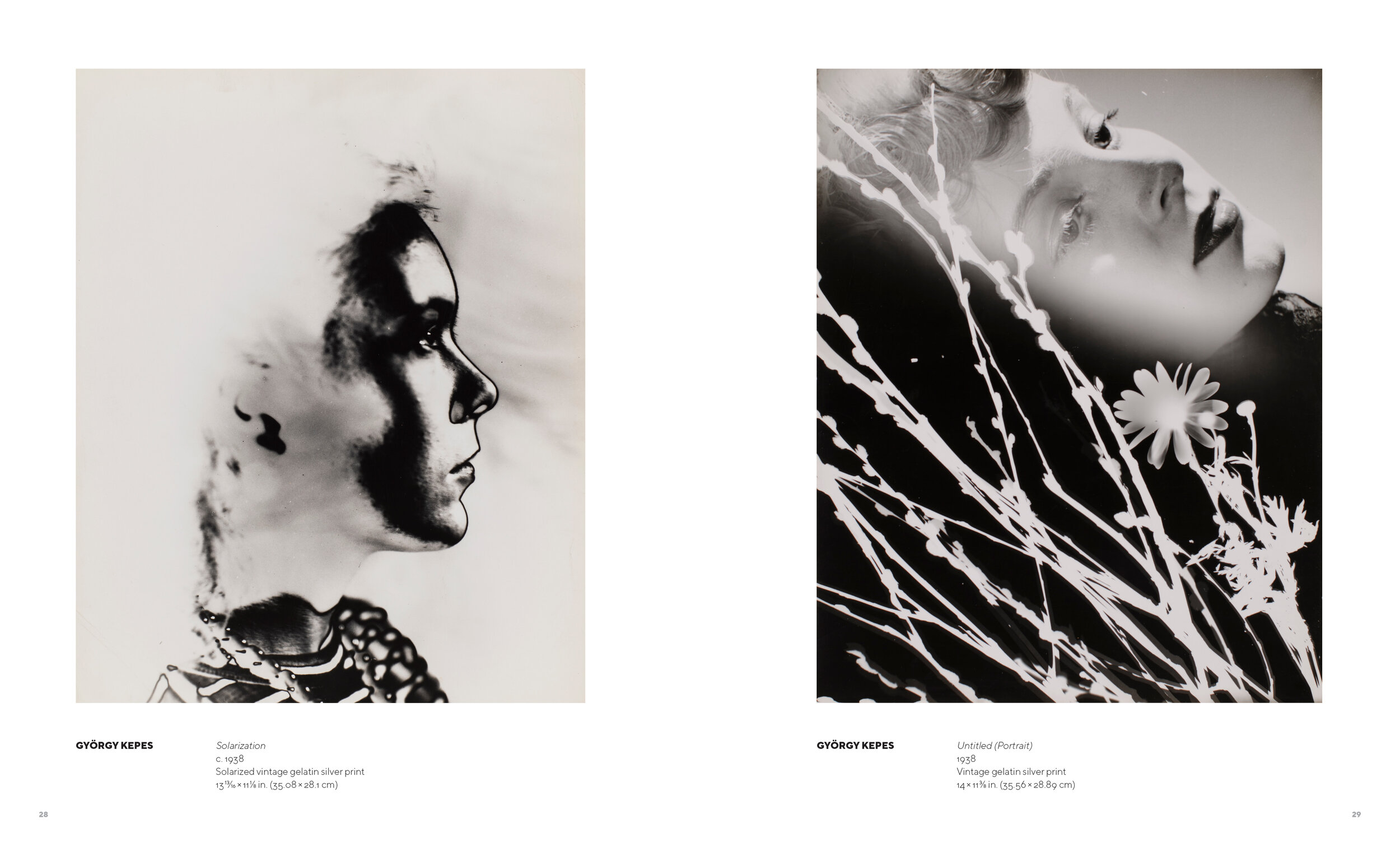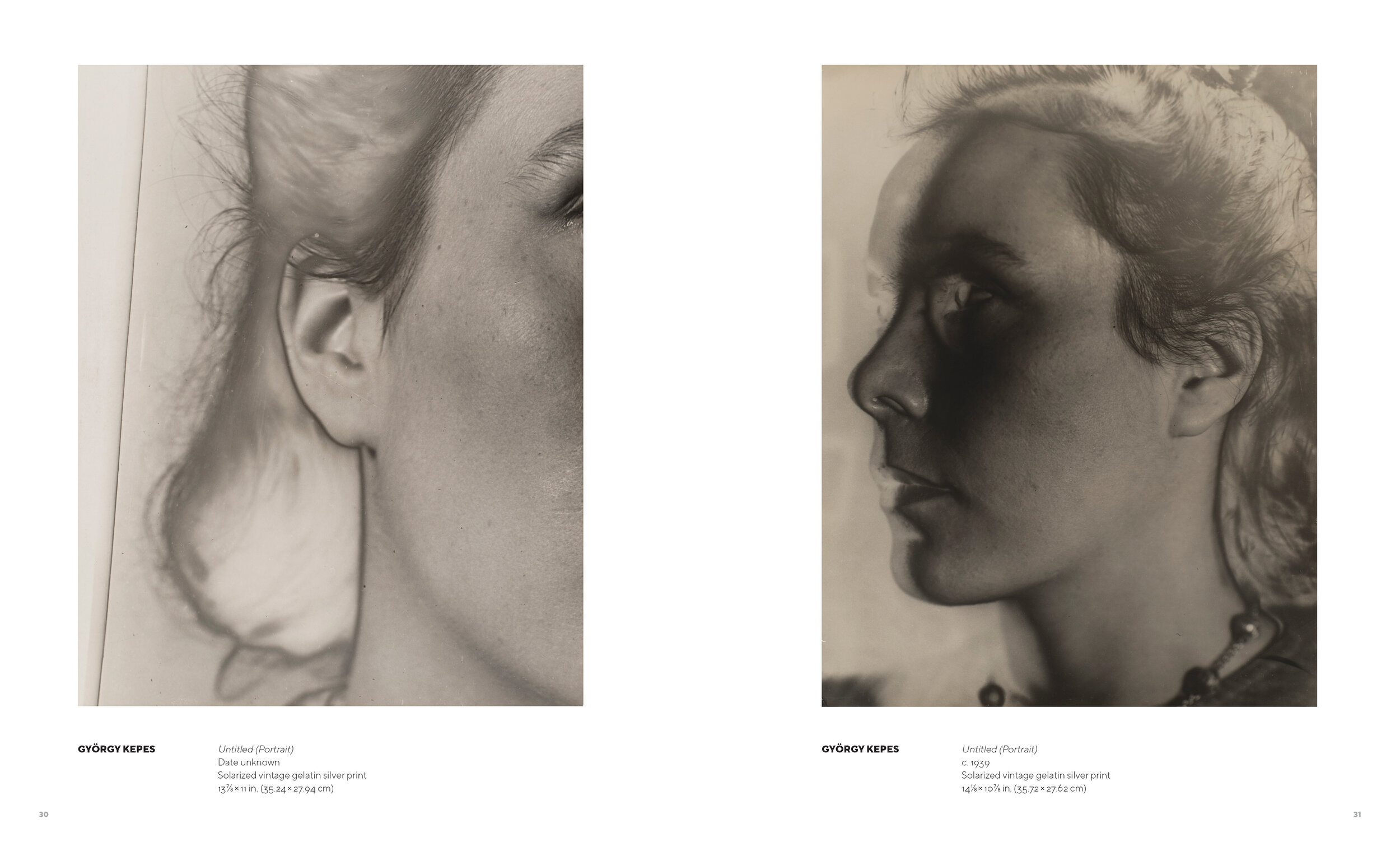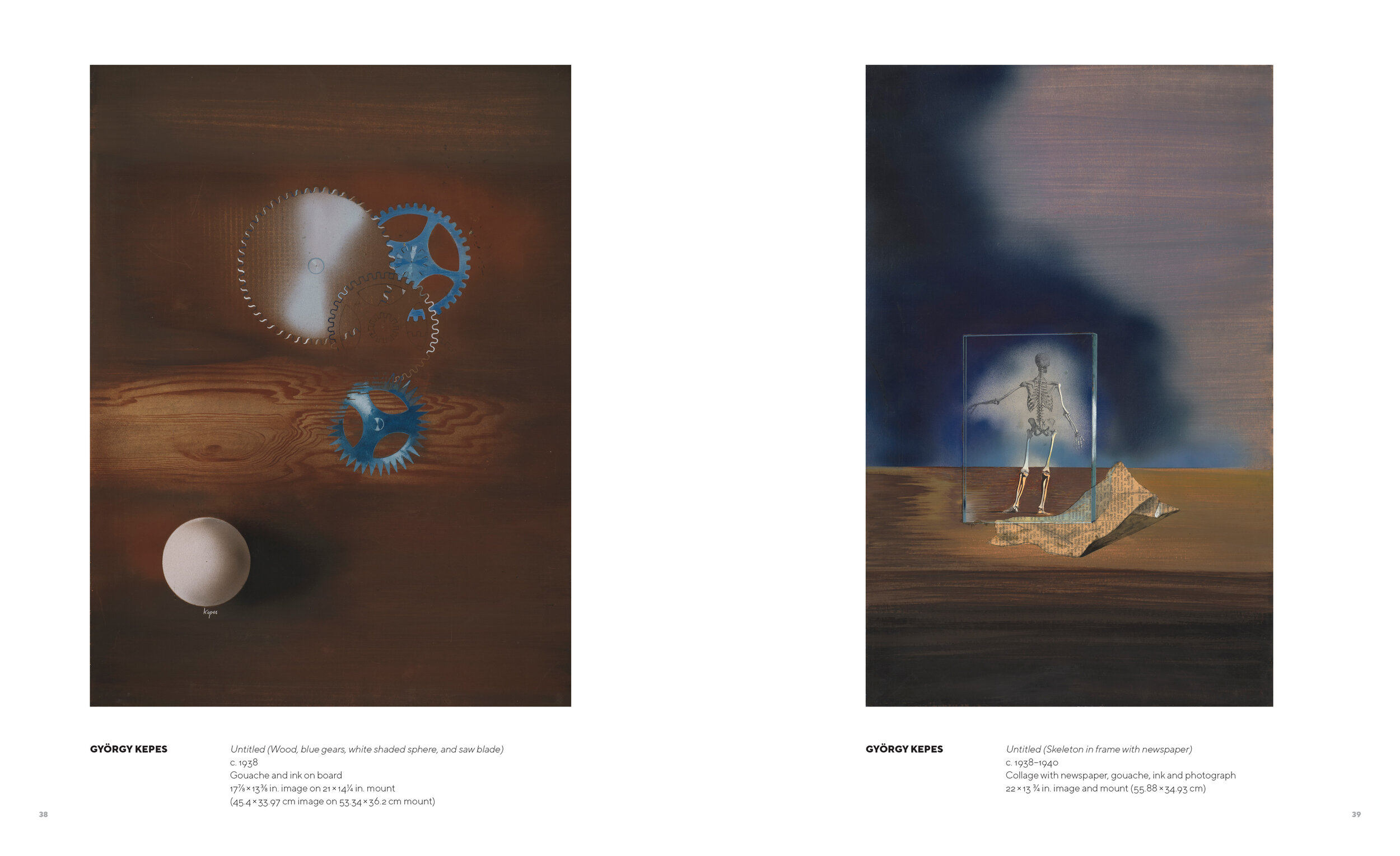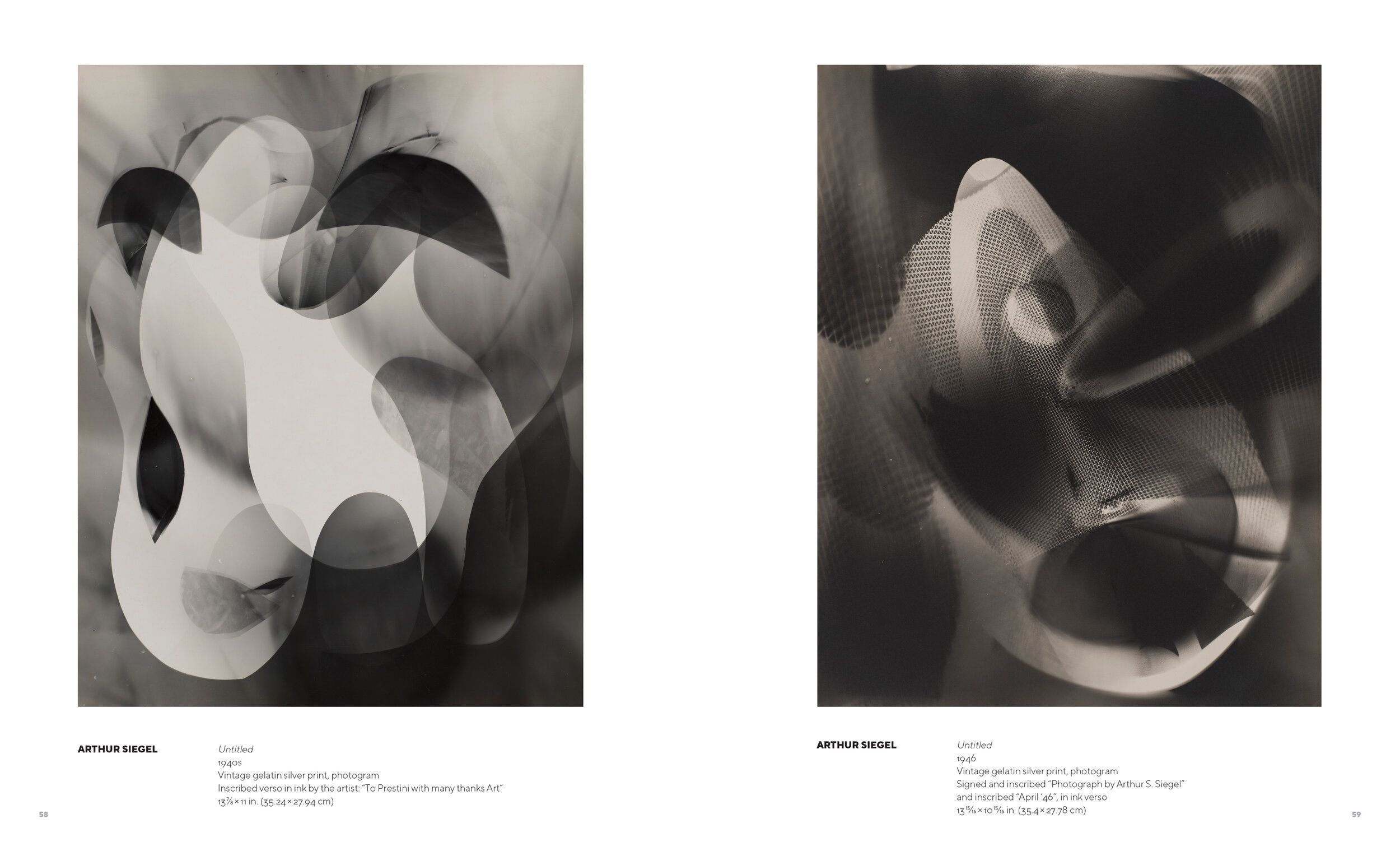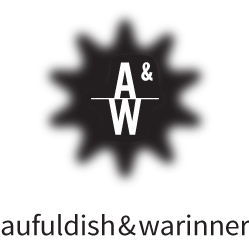György Kepes: New Bauhaus in America
Exhibition catalogue for Robert Koch Gallery
Essay by Leland Rice
From the essay by Leland Rice:
When, in 1938, the Museum of Modern Art in New York mounted the first major Bauhaus exhibition in America, Alfred Barr, the director declared, “The Bauhaus is not dead; it lives and grows through the men who made it, both teachers and students.” The New Bauhaus, after only a year in existence, was represented in this significant exhibition with works in graphic design and photography. With György Kepes and Moholy-Nagy, as teachers and passionate theorists, expounding their ideas in lectures and publications—The New Vision by Moholy and The Language of Vision by Kepes—the New Bauhaus established itself as central to the creation of entirely new forms of image making.
At the New Bauhaus, when Kepes began teaching the Light Workshop, he introduced his students to the study of two-dimensional forms using photographic materials and light modulators. He was assisted by Henry Holmes Smith (1909–1986), an accomplished Chicago based photographer who, by 1936, was experimenting with abstract color imagery using the dye-transfer process. Kepes introduced the idea of forming cameraless images using photo-sensitive material without engaging the mechanical precision of optical instruments. He called this work “photogenics” (light producing) rather than the universally used term “photogram” (light writing) associated with Moholy. This technique was used as an important teaching tool to introduce the student to a visual application of photography materials toward graphics and non-representational imagery.
68 pages
9 x 11 inches
